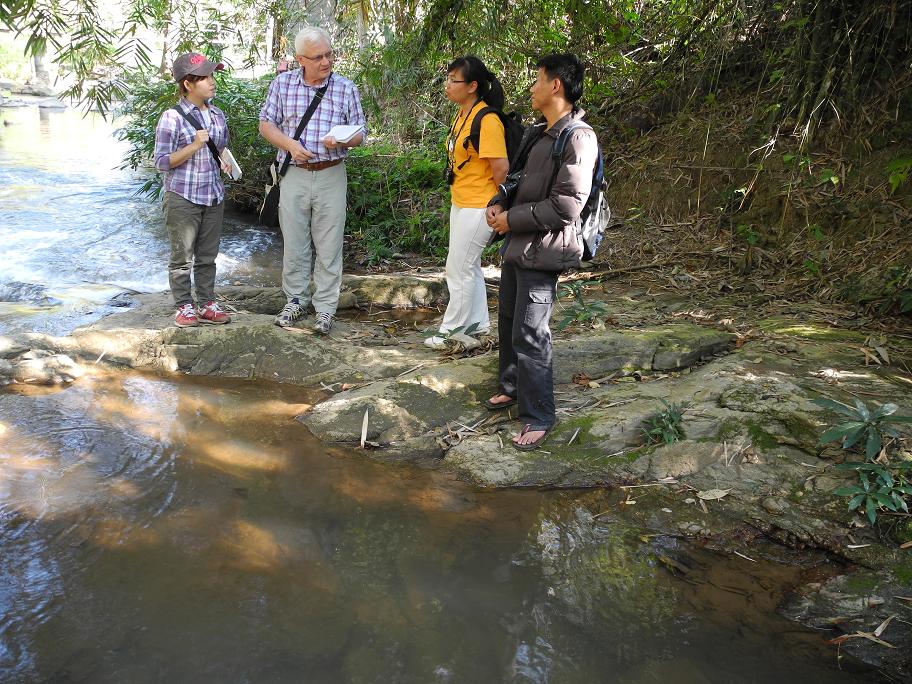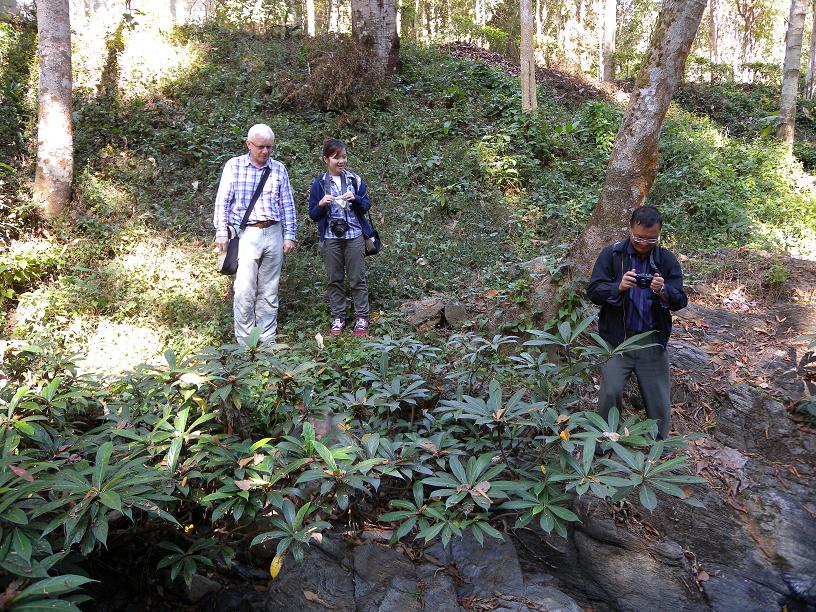Chinese, British and Thai scientists conducted a field study of the resources of fig trees and fig wasps that pollinate them in northern Thailand from January 25 to February 5, 2012. The scientists are Prof. Yang Darong and Prof. Peng Yanqiong from Xishuangbanna Tropical Botanical Garden (XTBG), Prof. Stephen Compton from University of Leeds, and Dr. Prasit Wangpakapattanawong from Chiang Mai University.
The researchers conducted field studies on diversity of fig trees and fig wasps in Chiang Dao Wildlife Conservation Centre,Mae Sai river region, Wachirathan waterfall region, Dio Suthep forest, Doi Inthanon National Park, Royal Garden SIRIBH UME region,and Queen Sirikit Botanic Garden. They also studied the greening fig species used along streets in Chiang Mai, Bangkok, and Phaya Thai Station.

Observing fig trees in the field
Natural distribution of 41 fig tree species was recorded in northern Thailand, among which 31 species showed similar habitats with those in Xishuangbanna. A few species such as Ficus maclellandi, Ficus callosa, Ficus squamosa, and Ficus stenophylla showed much difference in leaf size and growth vigor. Six fig species which are not naturally distributed in China were collected by the researchers.

Observing growth of fig trees
In addition, the researchers collected specimens of fig wasps representing 25 species, got 11 herbarium specimens of fig trees representing 9 species, and took over 3000 photos of fig trees and fig wasps.
During their stay in Thailand, XTBG scientists delivered a lecture concerning interactions between figs and fig wasps in Chiang Mai University. The two sides also showed intention for long-term cooperation.

Communicating with Thai scientist (Images by PENG Yanqiong)



